Jeonghwan Gwak
Korea National University of Transportation
A Recent Survey of Vision Transformers for Medical Image Segmentation
Dec 01, 2023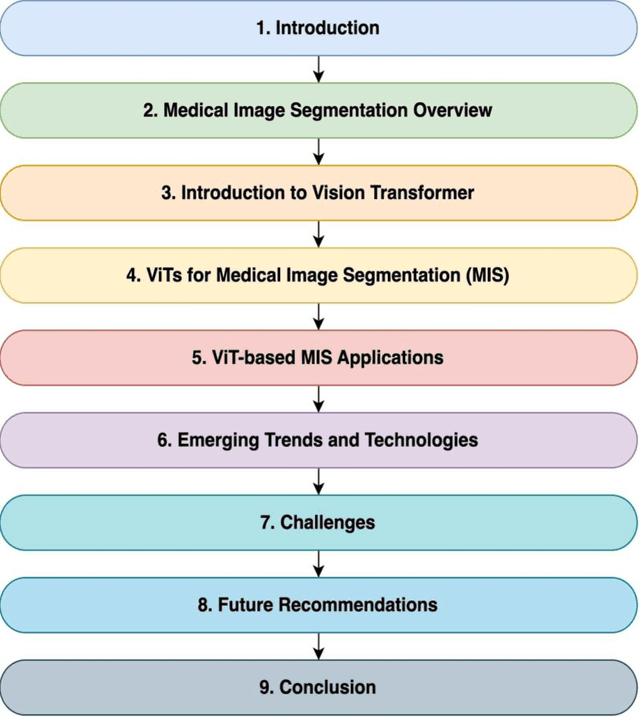
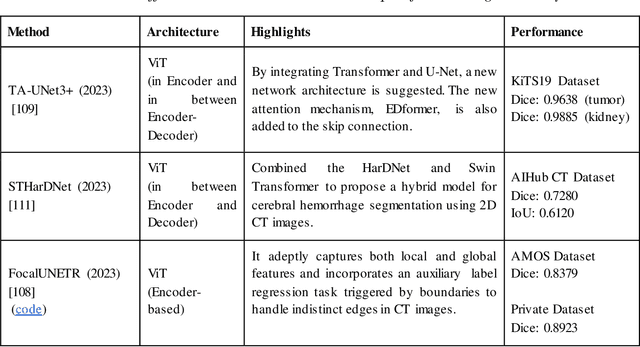

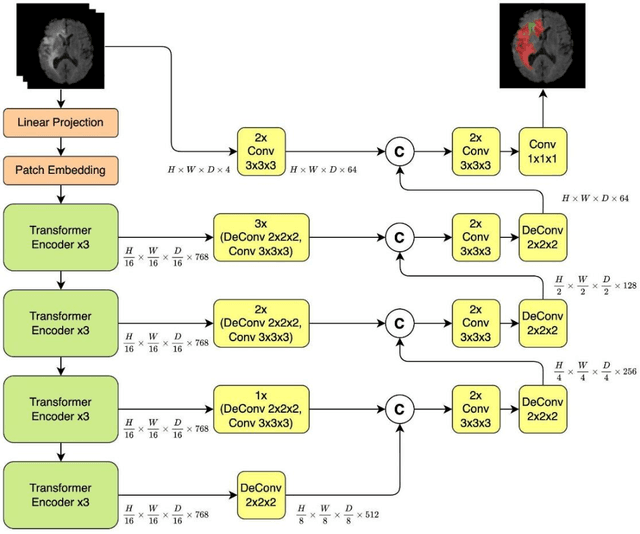
Abstract:Medical image segmentation plays a crucial role in various healthcare applications, enabling accurate diagnosis, treatment planning, and disease monitoring. In recent years, Vision Transformers (ViTs) have emerged as a promising technique for addressing the challenges in medical image segmentation. In medical images, structures are usually highly interconnected and globally distributed. ViTs utilize their multi-scale attention mechanism to model the long-range relationships in the images. However, they do lack image-related inductive bias and translational invariance, potentially impacting their performance. Recently, researchers have come up with various ViT-based approaches that incorporate CNNs in their architectures, known as Hybrid Vision Transformers (HVTs) to capture local correlation in addition to the global information in the images. This survey paper provides a detailed review of the recent advancements in ViTs and HVTs for medical image segmentation. Along with the categorization of ViT and HVT-based medical image segmentation approaches we also present a detailed overview of their real-time applications in several medical image modalities. This survey may serve as a valuable resource for researchers, healthcare practitioners, and students in understanding the state-of-the-art approaches for ViT-based medical image segmentation.
An objective validation of polyp and instrument segmentation methods in colonoscopy through Medico 2020 polyp segmentation and MedAI 2021 transparency challenges
Jul 30, 2023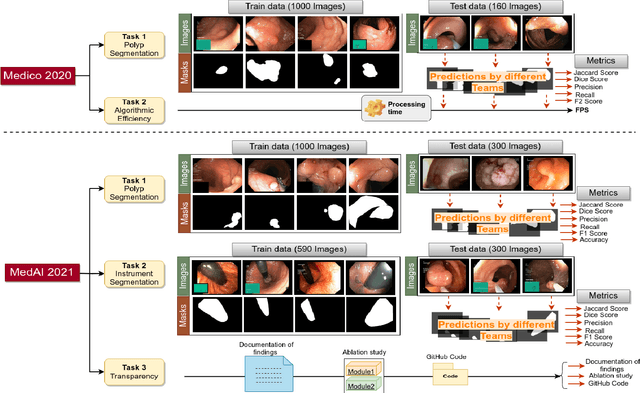

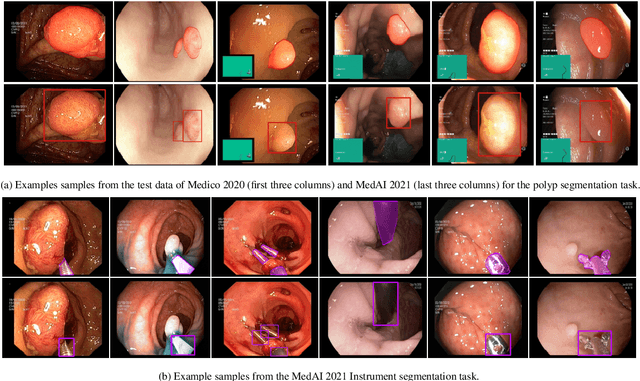
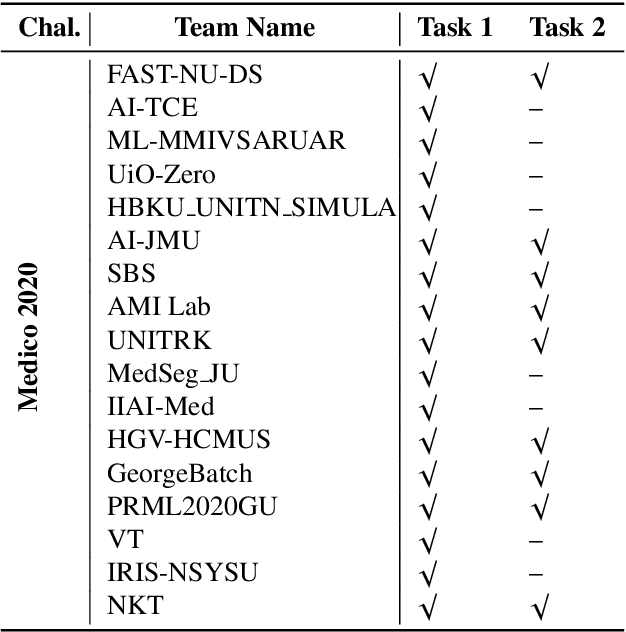
Abstract:Automatic analysis of colonoscopy images has been an active field of research motivated by the importance of early detection of precancerous polyps. However, detecting polyps during the live examination can be challenging due to various factors such as variation of skills and experience among the endoscopists, lack of attentiveness, and fatigue leading to a high polyp miss-rate. Deep learning has emerged as a promising solution to this challenge as it can assist endoscopists in detecting and classifying overlooked polyps and abnormalities in real time. In addition to the algorithm's accuracy, transparency and interpretability are crucial to explaining the whys and hows of the algorithm's prediction. Further, most algorithms are developed in private data, closed source, or proprietary software, and methods lack reproducibility. Therefore, to promote the development of efficient and transparent methods, we have organized the "Medico automatic polyp segmentation (Medico 2020)" and "MedAI: Transparency in Medical Image Segmentation (MedAI 2021)" competitions. We present a comprehensive summary and analyze each contribution, highlight the strength of the best-performing methods, and discuss the possibility of clinical translations of such methods into the clinic. For the transparency task, a multi-disciplinary team, including expert gastroenterologists, accessed each submission and evaluated the team based on open-source practices, failure case analysis, ablation studies, usability and understandability of evaluations to gain a deeper understanding of the models' credibility for clinical deployment. Through the comprehensive analysis of the challenge, we not only highlight the advancements in polyp and surgical instrument segmentation but also encourage qualitative evaluation for building more transparent and understandable AI-based colonoscopy systems.
CB-HVTNet: A channel-boosted hybrid vision transformer network for lymphocyte assessment in histopathological images
May 16, 2023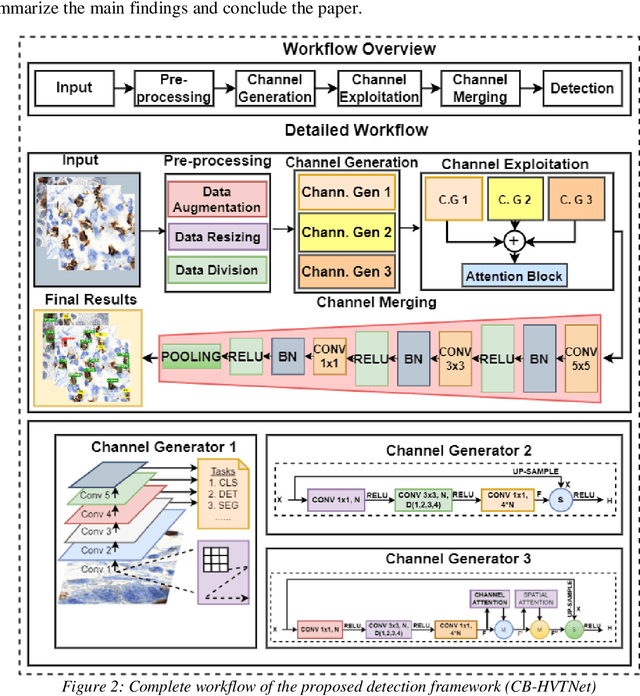

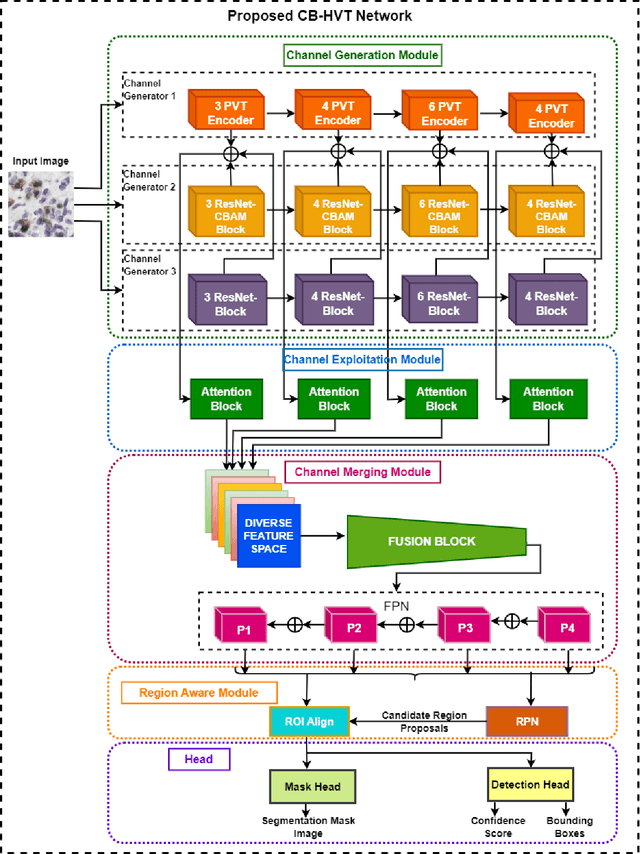

Abstract:Transformers, due to their ability to learn long range dependencies, have overcome the shortcomings of convolutional neural networks (CNNs) for global perspective learning. Therefore, they have gained the focus of researchers for several vision related tasks including medical diagnosis. However, their multi-head attention module only captures global level feature representations, which is insufficient for medical images. To address this issue, we propose a Channel Boosted Hybrid Vision Transformer (CB HVT) that uses transfer learning to generate boosted channels and employs both transformers and CNNs to analyse lymphocytes in histopathological images. The proposed CB HVT comprises five modules, including a channel generation module, channel exploitation module, channel merging module, region-aware module, and a detection and segmentation head, which work together to effectively identify lymphocytes. The channel generation module uses the idea of channel boosting through transfer learning to extract diverse channels from different auxiliary learners. In the CB HVT, these boosted channels are first concatenated and ranked using an attention mechanism in the channel exploitation module. A fusion block is then utilized in the channel merging module for a gradual and systematic merging of the diverse boosted channels to improve the network's learning representations. The CB HVT also employs a proposal network in its region aware module and a head to effectively identify objects, even in overlapping regions and with artifacts. We evaluated the proposed CB HVT on two publicly available datasets for lymphocyte assessment in histopathological images. The results show that CB HVT outperformed other state of the art detection models, and has good generalization ability, demonstrating its value as a tool for pathologists.
Ensemble CNNs for Breast Tumor Classification
Apr 11, 2023Abstract:To improve the recognition ability of computer-aided breast mass classification among mammographic images, in this work we explore the state-of-the-art classification networks to develop an ensemble mechanism. First, the regions of interest (ROIs) are obtained from the original dataset, and then three models, i.e., XceptionNet, DenseNet, and EfficientNet, are trained individually. After training, we ensemble the mechanism by summing the probabilities outputted from each network which enhances the performance up to 5%. The scheme has been validated on a public dataset and we achieved accuracy, precision, and recall 88%, 85%, and 76% respectively.
 Add to Chrome
Add to Chrome Add to Firefox
Add to Firefox Add to Edge
Add to Edge